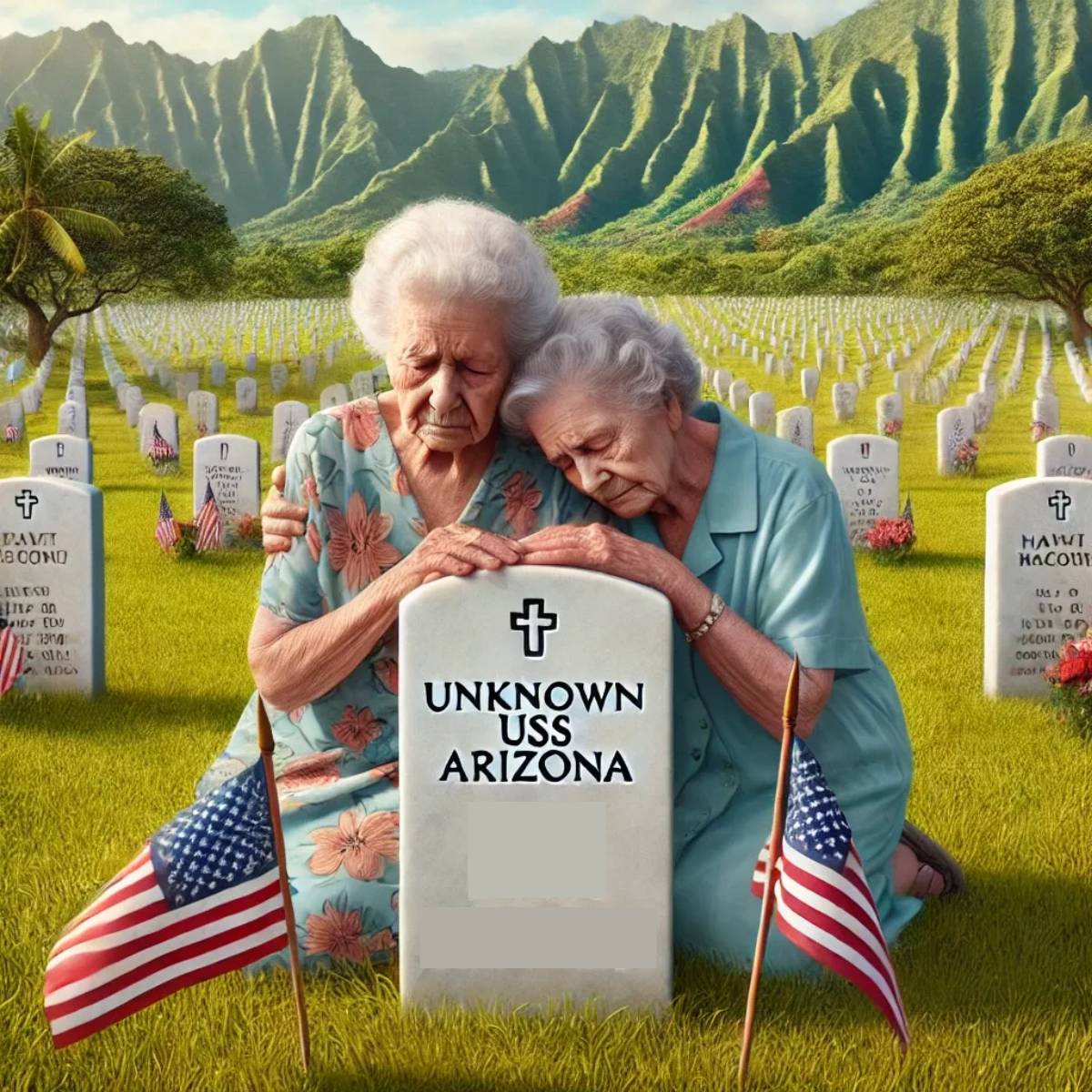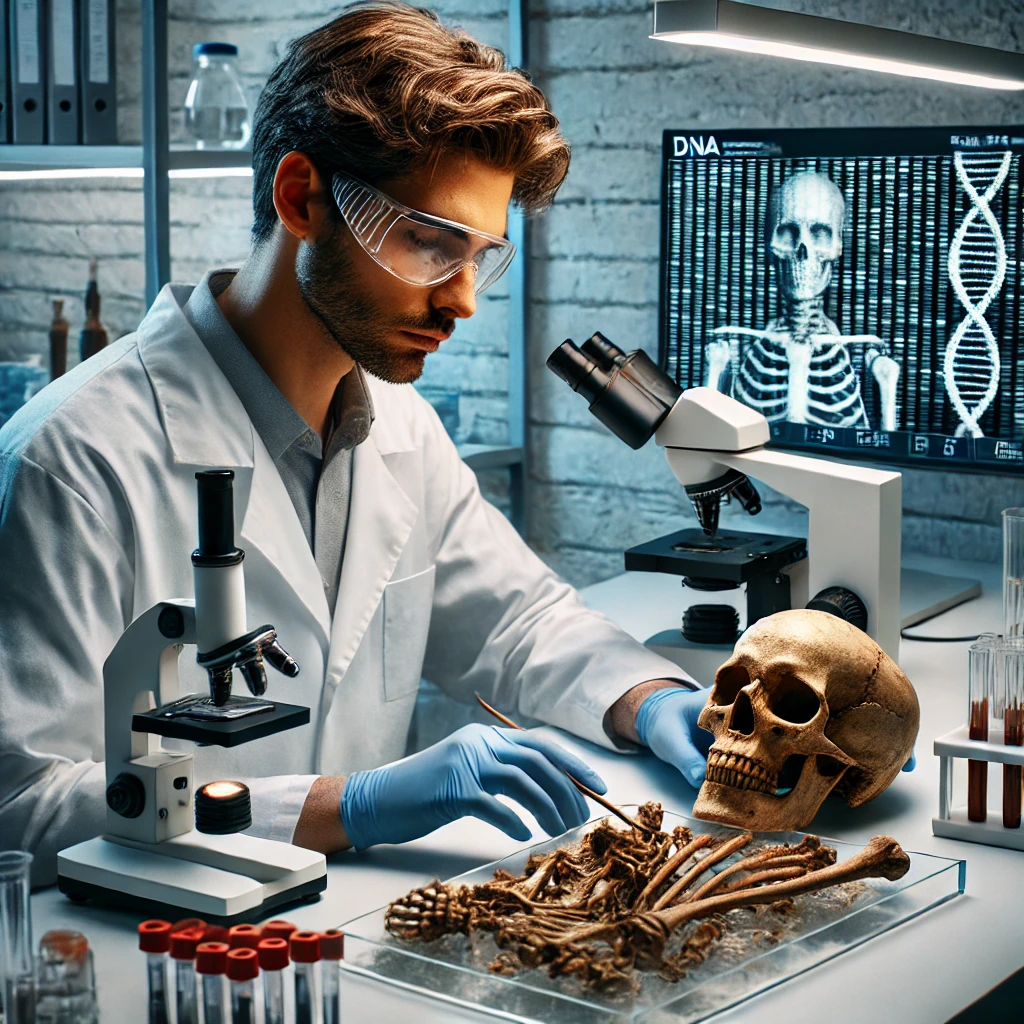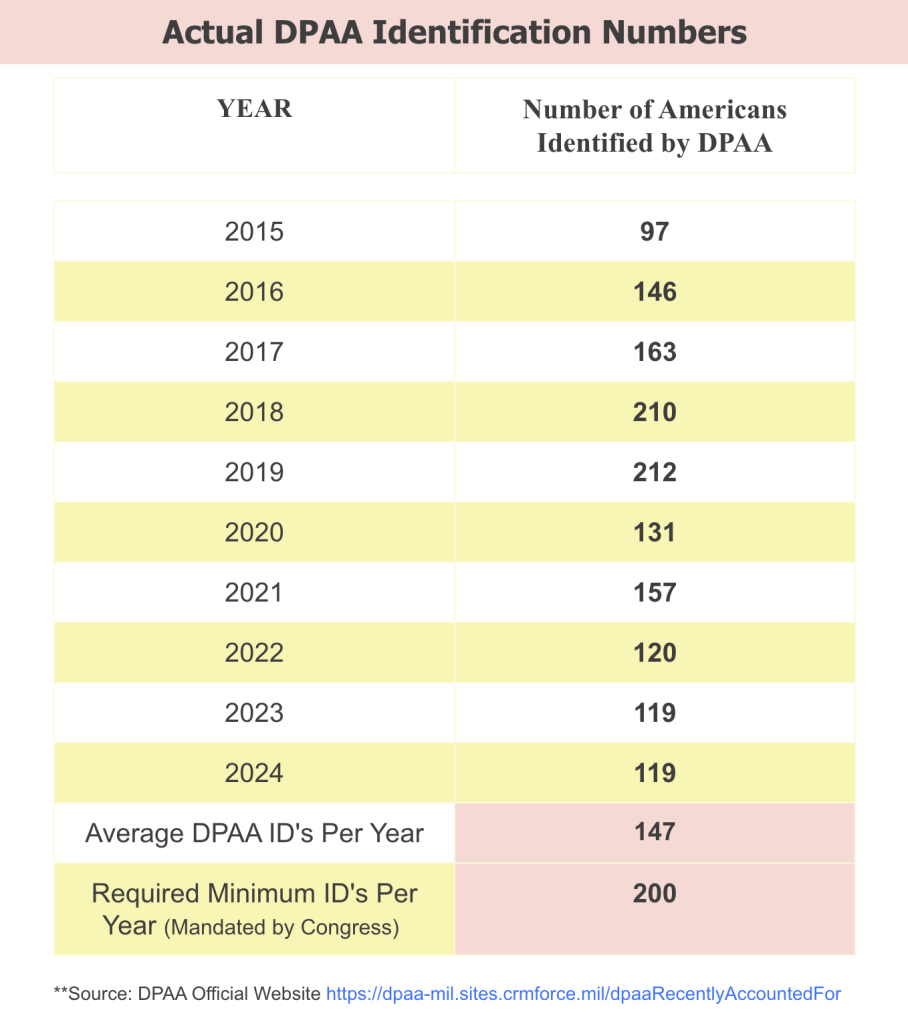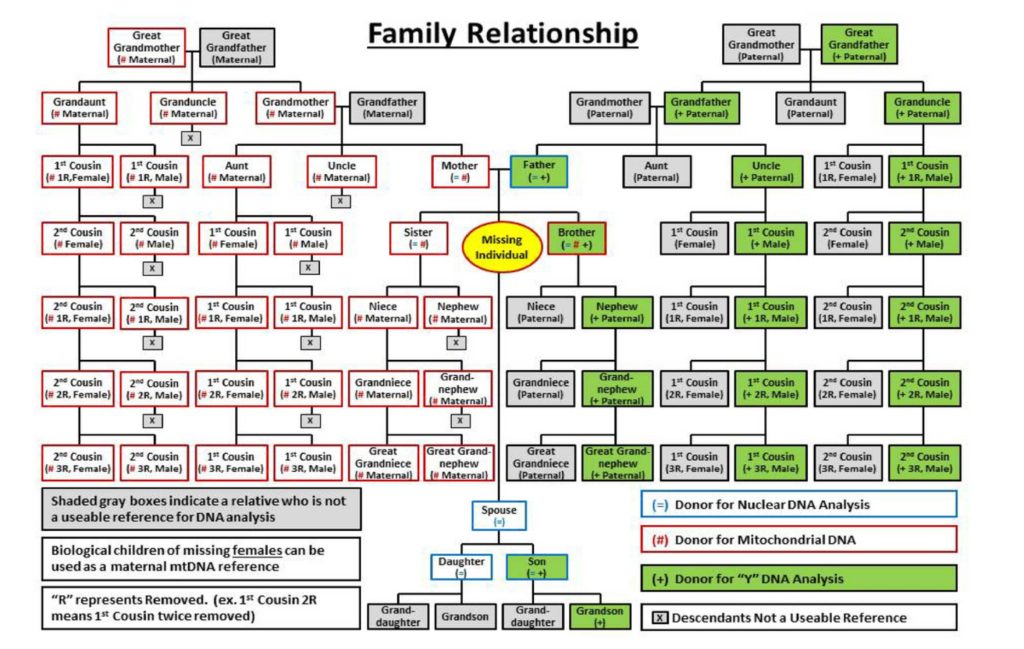Understanding DPAA DNA Technology & Identification Methods

Understanding DPAA DNA Technology & Identification Methods
Is DPAA Deliberately Holding Back the Use of Advanced DNA Technology?
For all of our Operation 85 family members that are considered non-viable Family Reference Samples by the Defense POW/MIA Accounting Agency (DPAA), especially our paternal nieces or granddaughter connections, it can be frustrating and disappointing when told your DNA is unable to help identify your missing family member. As someone leading this effort, it’s frustrating for me as well, as we would have a higher representation of crew members from the U.S.S. Arizona if family members currently considered “non-viable” by DPAA, were actually able to participate. So, why can’t they?
If you ask this question at a DPAA Family Member Update, you will get a very honest, yet highly scientific answer from leadership at the Armed Forces DNA Identification Lab (AFDIL) about the “why”. But as someone who has sat through that answer a dozen times and even had one-on-one conversations with leadership about the topic, understanding the scientific answer can be very difficult for the average person, myself included. But after 15 months of doing nothing else, I can explain the “why” in layman’s terms, and in a way I wish it had been explained to me earlier on.
- The methods for DNA identification matching by AFDIL were developed in the 1990’s and are still being used today.
- The average person may not realize that DNA can be looked at in different ways. The DNA can be looked at in a way that focuses on where each person is unique and has DNA unlike anyone else in the world. Alternatively, the DNA can also be looked at with attention to where DNA remains the same throughout many generations such as Y chromosome DNA (yDNA) and mitochondrial DNA (mtDNA). The DPAA currently uses the alternative option, focusing on these generationally shared areas of the DNA.
- The mtDNA and yDNA, considered as viable DNA samples of methods used by DPAA and AFDIL, will not definitively 100% connect a specific missing crew member with a specific DNA Family Reference Sample alone.
- mtDNA is shared for generations across family groups, with some profiles being relatively common and others more rare. There is a very good chance that different USS Arizona crew members and families could all share the same mtDNA with each other. While mtDNA can greatly narrow down the matches between 1,072 different crew members, it is not 100% accurate in connecting one specific missing crew member to one specific family member.
- yDNA is similar to the mtDNA description above in that it is shared for generations in family groups. While it can support an identification, it can not be used conclusively on its own.
- This is why the DPAA would like to have at least 2 mtDNA samples & 2 yDNA samples for each crew member, greatly increasing their chances of getting an accurate DNA match through their own current methods.
- In an effort to help “bridge the gap” of the high probability that they do not have a 100% DNA match using their current methods, DPAA hires dozens of historians to research and connect circumstantial evidence with each case they are working on. These historians use evidence such as location, items found near the remains, and documents or reports linking the missing service member to any evidence found on scene and at the specific location the remains were found. They create a historical “story” around the case to use within the identification process.
- DPAA Scientists will conduct a forensic anthropological study of the remains and if possible, compare those remains with the missing persons past medical files hoping to match dental records with teeth, past broken bones or any other clues that would help find more definitive connections for a positive identification.
- Together, the DPAA uses circumstantial evidence and historical documentation, along with anthropological analysis, mtDNA & yDNA Family References Samples to then make their “best educated guess” for a positive identification.
Yes, you read that correctly… in the DPAA final determination for an identification, it is a “Best Guess” using a multitude of factors that determines the identification of the remains, and it is not DNA alone that identifies a missing American using the DPAA’s current methods.
You would be correct to infer that the accuracy and methods of the current DPAA identification process is not really perfect, may seem somewhat archaic, involves more resources than necessary, and has left the door open for potential errors. And unfortunately yes, there have been mistakes in the past of handing over the wrong remains to family. The DPAA’s current methods for identification could best be described as using a “flip phone” from the 1990’s, compared to using the latest “smart” Apple iPhone of today. But it does not need to be this way.

The science of DNA has evolved immensely from the 1990’s and newer methods are highly accurate and successful in connecting DNA samples with family and missing persons in a quick and very cost-effective manner. Ancestry.com uses it, 23andMe uses it, many law enforcement agencies are using it, but DPAA is not.
Private companies such as Othram have utilized Forensic Genetic Genealogy (FGG) technology to resolve hundreds of missing persons and criminal cases. Another forensic laboratory, Bode Technology, which helped identify the remains of 9-11 victims from the rubble of the World Trade Center, is also utilizing FGG in their fully accredited laboratory to identify unknown remains. It has even been shown that these modern DNA techniques can be used successfully to identify fallen WWII heroes efficiently and cost-effectively.
In 2014, Bode Technology used this technology to help identify PFC Lawrence Gordon and they did so again in 2024 to support the identification of 1LT Nathan B. Baskind. In 2022, Bode demonstrated that the case of Pvt. Arthur “Bud” Kelder could have been solved swiftly with the use of FGG. Pvt. Kelder had already been identified by DPAA in 2015 after years of the family fighting for testing, and ultimately filing a lawsuit against the federal government in 2012. Not surprisingly, the remains were quickly linked to the true relatives, showing not only that it can work, but that it can be significantly less time-consuming and costly than prior methods. The technology is here and is being used to close missing persons cases. So, let’s understand “why” the DPAA has fallen behind the 8 ball.

For only a cool price tag of $2 million, anyone could purchase the hardware and machinery needed to do this high-tech work. But the results do not come from owning the hardware. The “secret sauce” is in the process and methods used by each individual company or government agency to extract and analyze the DNA samples and find a match. Defining the process and the subsequent validation of the machinery is time-consuming and very expensive. There is no handbook on how the process works. It’s this proprietary method that is highly sought after and protected.
The Armed Forces DNA Identification Lab (AFDIL) understands the technology very well. The issue is not that they are unaware of it, or that they cannot afford the cost of the machinery. The issue is that they have not yet implemented their own correct process or methods to use the technology and make positive matches. AFDIL does not yet have a “secret sauce” to do the job, and until they do, they must continue to resort to using the older, more cumbersome and less accurate technology.
Over the past year, I’ve met or spoken with the Director of AFDIL multiple times. While I believe the staff and leadership want to do the right thing, there seems to be a desire or need to maintain tight control, rather than contracting tasks related to modern FGG techniques. This need for “control” has put a roadblock or delay in the success of the overall DPAA mission of “Fulfilling our Nation’s Promise”. DPAA and AFDIL are basically ‘Standing in their own way’. In my opinion, this leads to almost a “scientific monopoly” on the resolution of all missing American family members, as AFDIL is the only game in town. I see the issue more that DPAA is 100% reliant upon their one lab, and not looking to the private sector for outside resolutions that are readily available, tested and successful.
Unfortunately, the lack of competition in this area impacts families. The DPAA currently relies solely on AFDIL for forensic DNA services, which means there’s little incentive for AFDIL to adopt new, cutting-edge technology that is rapidly advancing the field of DNA identification. While AFDIL will eventually develop its own methods for FGG, they aren’t under the same pressure to innovate as private accredited labs. It would be beneficial for DPAA to consider introducing competition by involving the private sector. Additionally, we should consider the cost-effectiveness of continuing to develop in-house technology when proven solutions already exist in the private sector.
Both Othram and Bode have stated that the cost would be roughly $8-10 thousand dollars per crew member to identify the remains of the unknown U.S.S. Arizona crew at the Punch Bowl cemetery and may potentially take up to two years to complete. ($850,000) That’s roughly 1/3 of the cost the Navy quoted it would take just to locate and solicit FRS from family, a service Operation 85 has been doing on a volunteer basis and completely free of charge. Additionally, they would no longer need the thousands of DNA Family Reference Samples that Operation 85 has been working so hard to obtain, as the newer method works backwards, identifying the missing first and then connecting with the family through a less intensive genealogy search.
However, this would require that the remains be handed over to the private accredited labs for their DNA extraction and analyzation methods to be used. While this is done every day by law enforcement agencies, including the FBI and other federal agencies, it is something the DPAA and AFDIL seem to not want to even discuss.
I think it’s fair and important to point out that FGG DNA technology will not always have successful results in every case. However, under the right circumstances, its accuracy can be far superior, less costly and extremely more efficient when dealing with large numbers of commingled graves and remains such as the case in our USS Arizona unknowns. Since the DPAA already uses multiple factors to make a “Best Guess” determination in an identification, starting with or adding FGG to the process seems like a “no brainer”… and then subsequently using the extensive FRS collection, anthropology, historians and relevant documentation to the case as a secondary approach if needed. We also cannot simply rule out the mtDNA approach that DPAA uses, as there are literally thousands of copies of mtDNA in every cell, versus a single copy of nuclear DNA per cell. DNA for FGG comes from nuclear DNA. So we also must take in account the degradation of the remains after 80 years in the ground and the risk of damaging remains to find one usable nuclear DNA. Nuclear DNA is more accurate, but mtDNA is more plentiful.
Everyone recognizes the importance of DNA FGG, and it’s clear that DPAA and AFDIL believe in its potential—otherwise, they wouldn’t be investing tax dollars to develop their own internal methods and processes. The real question isn’t whether they believe in its effectiveness, but why they aren’t contracting out assistance while they work on developing their own capabilities. As a family member, that’s the delay I find disturbing, as if there is a little “ego” or too much pride involved here. And yes, with FGG technology, paternal nieces and granddaughters and other currently non-viable DNA family references samples would be considered useful and helpful to make a family connection.
So, is DPAA deliberately holding back the use of advanced technology? In my opinion, Yes and No. By not contracting this technology out to private labs, the identification of these crew members is delayed. Lacking effective in-house methods, DPAA has shifted its focus to marketing and public relations while buying itself time trying to develop the correct identification techniques in-house. Sadly, this delay means hundreds of families lose hope each year without answers about their missing loved ones. And those families have no true idea of why that delay happened. DPAA’s social media might suggest they’re making hundreds of identifications monthly, but they often recycle old cases to maintain appearances. How many more #ThrowBackThursdays can we put up with before calling attention to the truth.
Instead of resisting change, the focus should be on finding the best way to quickly implement this powerful new technology to assist in identifying thousands of Americans, rather than just the 147 cases on average the DPAA completes each year. Congress has mandated the DPAA to a required minimum of 200 identifications per year. Only twice were they successful in their annual mandate and at the current pace it will take another 211 years to identify the 31,000 still missing and unknown Americans that they believe could be accounted for. Do we want to wait 211 more years?
So, how do we move forward? Instead of dwelling on government shortcomings, we can focus on raising awareness and driving meaningful change to newer and better technology. I’m choosing to do just that. “Fulfilling our Nation’s Promise” means we have to make tough changes and decisions that could shine a light on unfortunate past mishandling’s and errors, but eventually result in getting it right in the end. We have the opportunity to use cutting-edge technology to address this issue, bringing long-awaited answers to the families of missing American service members.
HOW YOU CAN HELP!
Operation 85 is doing most of the grunt work, but there is an important thing each family member can do. Whether you are a USS Arizona family member, or your loved one is missing from another WW2 conflict, Korea, Cold War or Vietnam… print out this article and send it to your Congressman or Senator. Make them aware of what’s really happening and not happening. As a constituent, you can kindly request your representative to communicate with Operation 85 on your behalf. I would be happy to arrange a meeting with staffers. I have done this dozens of times already. You can also demand answers yourself. I’ve found most staffers very receptive to this issue and very easy to talk with. Feel free to email me anytime with suggestions or questions.
You can also send this article to your local media, radio and news contacts. Let them know your connection to your missing family member. I greatly appreciate the support from all the family!
-Kevin Kline
SOURCES: This article was written and researched by Kevin Kline on behalf of Operation 85 and the families of the USS Arizona unknowns.
During the research for this article I reached out with questions to DPAA/AFDIL, many of which still are unanswered or have not been responded to after several months. Should we get any information that helps the information within this article, I will happily amend our article if needed.
DPAA : DoD Directives JAN 2017:
DoD Use of DNA Report JULY 1995

